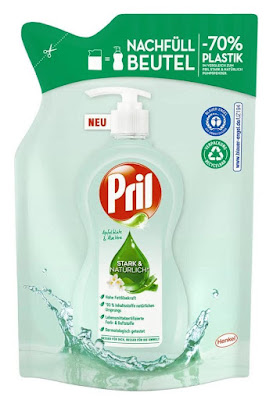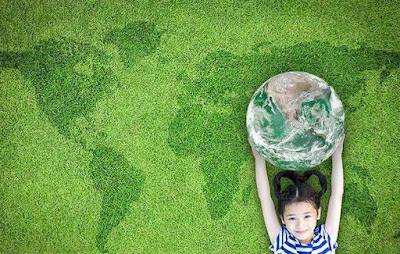Under the guidance of controlling plastic pollution and improving waste recycling, the 14th Five-Year Circular Economy Development Strategy, the peak of carbon dioxide emissions, and the carbon neutral strategy, many packaging can be green, reduced and recycled. Various packaging and chemical companies have responded and actively explored green packaging.
Coca-Cola: We commit to 25% sustainable packaging by 2030
Coca-Cola committed on Thursday, February 10, to reuse 25 percent of its packaging globally by 2030, up from 16 percent in 2020.
If Coca-Cola achieves that goal, "it will be easier for us to achieve our goal of a 'garbage-free world' of every sale by 2030," Coca-Cola Chief Executive James Quincey said on a Feb. 10 financial report call. a bottle of Coke
Fund manager Green Century Capital Management said in a statement that Coca-Cola's announcement on Thursday was "the first known target of its kind" and a "hot strategic shift."
Previously, the Green Center and activist investor As You Sow put forward a shareholder proposal urging Coca-Cola to reduce single-use plastic. They are now considering whether to withdraw the proposal.
Monty and Henkel: Joint launch of fully recyclable single-material filling bags
Mondi, the world leader in packaging and paper, and chemical company Henkel are helping consumers use more sustainably by creating new concepts for reused packaging. The two companies have jointly developed packaging solutions for Henkel's dishwashing protection products. This solution uses soft packs instead of plastic bottles. This will support Henkel's sustainability goals of 100% recyclable or recyclable packaging and a 50% reduction in fossil-based virgin plastic by 2025.
Beginning in January, consumers can get the new home-fill pump dispenser in lightweight, single-material PE bags from Mondi. Replacing rigid plastic bottles with stand-up pouches can reduce plastic by 70% and facilitate recycling where existing infrastructure exists.
Muriel Joncheray, Global Key Account Manager, Consumer Resilience Products at Mondi, said: “Sustainability is an important factor in the home care industry and in line with trends across the market. Mondi has defined sustainability goals focused on circularly driven solutions in its MAP2030 Action Plan. This includes the goal of making our products 100% recyclable, recyclable or compostable by 2025. This is like Henkel's recyclable bags. Our Eco solution approach means working closely with the Henkel team to create new bags "Our goal is to provide solutions to achieve Henkel's sustainability goals, but materials and structures must protect shipping and shelf products, prevent leaks and minimize waste." Carsten Bertram, Head of Henkel's Global Packaging Innovation Dishwashing business added. “We recognise our responsibility in packaging. We have advanced sustainable packaging and set ambitious goals. Our strategy is based on a circular economy, focusing on integrating recycled plastic, reducing the use of plastic packaging, having reusable packaging, Closing the loop with a fully recyclable packaging concept. Mondi is clearly a partner in helping us use their expertise to create the best solutions for our products, our customers and the planet.”
Covestro: Recycled materials for Dutch phone cases
Covestro has partnered with Dutch mobile phone brand Fairphone to provide recycled material solutions for smartphones. Fairphone phones are known for their emphasis on green sustainability.
According to reports, Cosmos fully and partially recycled TPU-Desmopan brand, such as Desmopan 3095AU RC100, is used in the protective cases of Fairphone 3 and Fairphone 4. The brand is certified by RCS (Recycling Claims Standard), the international standard for traceability of recycled materials.
The fully recycled material has the advantages of new TPU materials such as high chemical durability and wear resistance, and easy processing. It melts at low temperature and has better fluidity than raw materials. This verifies the aforementioned material properties when making the Fairphone 3 case, and is currently used in the Fairphone 4 case.
Fairphone phones are known for their modular design, which facilitates better repairability. In such designs, in order to achieve repeated disassembly and maintenance, materials with strong mechanical properties are required. The back cover, middle frame and wireless charger of the new mobile phone Fairphone 4 use a polycarbonate pattern clone material containing cosmos PCR composition.
Cell phone parts made of polycarbonate are cloned using molds containing PCR components
The PCR content of the material is 30%~50%, and its physical properties are comparable to the raw materials, providing good impact strength, balanced fluidity, high rigidity and flame retardancy, ensuring long life, 30% less than the use of raw materials of carbon dioxide emissions.
The technicians suggested that the back cover of the mobile phone should be made of polycarbonate, the protective cover should be made of TPU, and the different parts should be made of a single material for subsequent recycling.
IKEA: Use only renewable or recyclable materials
IKEA said that product packaging is an important part of IKEA's business model and an important driver for affordability, sustainable development and safe handling. In response to plastic waste and pollution, IKEA has drastically reduced the amount of plastic used in packaging. Less than 10% of the packaging material IKEA uses every year is now plastic. To get closer to its sustainability goals, IKEA has further eliminated plastic from its packaging, using only renewable or recyclable materials. Achieve plastic-free packaging for all new product lines by 2025, and phase out plastic packaging for existing product lines by 2028.
Amazon: French order packaging is becoming recyclable
Amazon France announced that it will stop using single-use plastic bags for packaging products by the end of 2021. This change applies to small items sold by private label and third-party sellers using FBA. Consumers are now receiving orders for paper packaging and corrugated packaging that is easily recycled through waste collection and disposal services. Now, these bags are made from more recycled material, and the package volume is reduced compared to standard cartons.
Estee Lauder: Packaging can be recycled
The Estée Lauder Companies has announced that it has joined the Pulpex Partner Consortium to begin developing recyclable bottles made from wood pulp. The new bottles are designed to be widely recycled in standard waste streams, supporting The Estée Lauder Companies' efforts to reduce the environmental impact of packaging throughout its lifecycle. In addition, the expansion of this technology will support The Estée Lauder Companies' efforts to drive progress towards global sustainable packaging goals. This includes the company's commitment to reduce the amount of virgin petroleum plastic in its packaging to less than 50% by the end of 2030, and by 2025 all cartons are FSC certified, with 75% to 100% of packaging "recyclable, refillable, reusable, recyclable
Totole: Speeding up sustainable packaging innovation to promote the regeneration cycle design
Totole has implemented light-colored bottle caps to replace dark-colored items, and implemented four measures: replacing packaging with recycled materials, canceling labels and carton lamination, and replacing recipe-style condiments in plastic wrapping paper. Research has shown that one of the main factors affecting plastic packaging is color. Dark plastic limits what can be recycled and has a narrow range of applications. Transparent and light-colored plastics are easy to degrade plastics, simplifying the recycling process and reducing carbon emissions in the recycling process. So Totole went all out to develop new packaging, changing the cap color to a lighter champagne color to help improve the efficiency of the packaging recycling process. The project plans to replace 12.7 tons of caps a year.
Jindian: the first aluminum foil aseptic brick packaging in China, leading the new trend of sustainable development
On December 11, Jindian, the leading organic milk brand, officially announced that it was the first to launch 0 aluminum foil * low carbon * paper-based composite packaging in China. This new generation of foil-free aseptic paper-based composite packaging, replacing aluminum foil with a new barrier layer, can significantly reduce the carbon footprint and help achieve carbon neutrality goals. In addition, the innovative packaging structure is simpler, uses fewer types of raw materials, is easy to recycle, and can greatly improve the recycling rate. In order to fully reflect the respect for nature and human beings, and fulfill comprehensive social responsibilities, Jindian also has the original intention of green development in product design. The whole line of Jindian adopts FSC forest-certified packaging materials. In 2020 alone, Jindian used 4.946 billion packages of FSC-certified green packaging materials, equivalent to more than 185,500 mu of forests that have been properly and sustainably managed.
Express packaging
At present, postal enterprises have completed the distribution of green packaging boxes in 30 provinces. Beijing and Henan are developing Cainiao.com, which is trialing biodegradable packaging bags, and SF Express is also developing bio-based packaging bags, tape-free cartons, etc.; Biodegradable packaging bags are comprehensively promoted in Jiangsu, Zhejiang, and Anhui Province. Best Express has tried environmental protection bags in Jiangsu, Zhejiang, and Anhui. Express, which accounts for 30% of the use of plastic bags, cooperates with third parties to produce oxidative and microbial dual-degradable green packaging bags. STO Express can recycle 50% Up to 60 eco-friendly folder sets
The development prospect of green packaging
With the proposal of CO2 emission peak and carbon neutral strategy, green packaging has been widely concerned and advocated by people from all walks of life. The recyclable design of product packaging has become an excellent opportunity for packaging and printing enterprises to achieve differentiated competition and sustainable development.
Adopt recyclable design to improve the recycling rate and recycling quality of plastic products, make plastic recycling a truly complete closed loop, and realize a complete life cycle from plastic production, use, recycling, and remanufacturing.






No comments:
Post a Comment